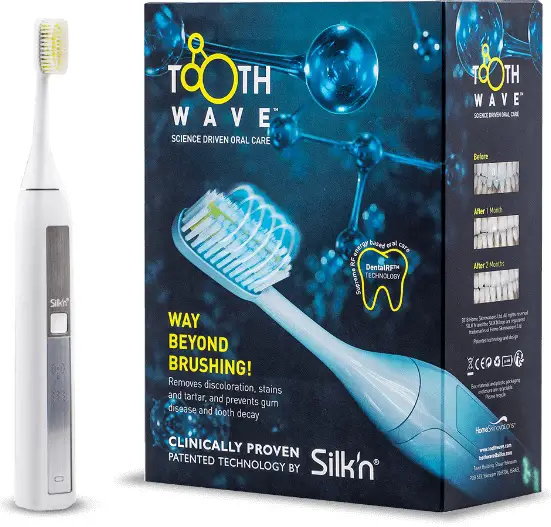Here we are going to talk about tooth brushes. Have you ever been to the supermarket, gone down the dental section and thought what toothbrush am I going to buy. You can be overwhelmed by how many toothbrushes are on offer.
Here are top tips to help you decide what toothbrush to buy.
We always recommend an electric toothbrush over a manual toothbrush purely because there is a research that showed that electric toothbrushes are better than using a normal toothbrush.
We personally use an electric toothbrush as well. That’s why we usually recommend electric toothbrushes. If we are going away overnight, or going away for the weekend somewhere, we may not necessarily take our electric toothbrushes. We would actually pack, just for convenience, manual toothbrushes.
These tips are more related to manual toothbrushes but they can apply to electric ones as well.

The first point is try to choose a toothbrush with a small head on it. The idea is that if all our teeth was just one nice flat plain, one flat area, it’s quite easy to get something big and just scrub away. A bit like your floor, you just scrub everything with a big brush.
Because your teeth aren’t flat, you’ve got lots of grooves in your teeth, there are gaps, there are curves and everything around it, if you get something big, you may not necessarily get into all the nooks and crannies.
Actually it’s a lot better to have a smaller toothbrush head. That’s typically why electric toothbrushes have a smaller head than other toothbrushes.
The second thing is to choose a toothbrush with the bristles that are either medium textured or soft textured.
If you use a harder toothbrush, you can scrub harder, but you could end up scrubbing away your gums or damaging your gums if you scrub too hard.
Usually electric toothbrushes, because they’re electric, they will always put a lot more pressure. So they use bristles that are extra soft to compensate for the fact that they’re electric.

Most dentists recommend that you always choose a soft or an ultra soft toothbrush. If you have had a history of gum disease, if your teeth are sensitive or your gums bleed very easily when you brush your teeth, you might want to select an ultra soft.
If you don’t have any of those conditions, a soft should be just fine.
Next point is to make sure that you replace your toothbrush head on a regular basis. When new, the bristles are nice and parallel on each side. On older toothbrushes, however, the bristles are flaring out. Once they flare out, they don’t tend to clean in between the gaps as effectively.
So once these do start to flare out, that’s the sign you have to start changing it.
A good thing about electric toothbrushes is that the bristles got different colored bristles and the bristles actually change color over time. Once blue bristles turn white, that’s also another sign that you should change them.
It is usually recommended to change your toothbrush roughly every three months. That’s the general guideline. If you’re changing your toothbrush head more often, like every month or every two months, you’re probably brushing too hard.
Check with a dentist to make sure you’re not brushing too hard.
Next one is rounded bristle tips and that’s important because when they are not round, they do little scratches on your gum and that’s injuring the gum and they will end up receding.
The last feature would be the handle and the handle is not such an important thing because we’re not using our toothbrushes for 10 hours a day. Just two minutes. Handle can be simple, it doesn’t need to be fancy.
The type of toothbrush that you choose doesn’t really matter, but we would recommend that you buy a name-brand toothbrush. The quality of the bristles are usually going to be better and they’re going to be more gentle on your gums.
How to Choose the Best Electric Toothbrush
Electric brushes are clinically proven to clean more effectively than their traditional manual counterparts.
The good news is that you don’t need to spend lots of money to get your hands on a good electric toothbrush.
Regardless of price, most models can be split into one of two categories: oscillating or sonic.
Oscillating brushes have heads with round bristle arrangements that rotate clockwise and anti-clockwise up to several thousand times per minute. This rapid oscillation helps you remove plaque more effectively by generating more brush movement across the surface of the tooth.
Sonic toothbrushes forego rotational movement and instead vibrate at ultra high frequencies, producing tens of thousands of small movements per minute.
The models with the highest frequency vibrations are ultrasonic brushes, which claim to agitate the fluid in your mouth, helping to clean between your teeth and even below the gum line.
In practice there’s no clear winner between oscillating and sonic toothbrushes and you may even find some offer a combination of rotation and pulsation.
Ultimately your choice will come down to personal preference.
Some may prefer the gentler feel of a sonic brush on their gums, while others may dislike the sonic sensation.
While the decision to choose between a sonic or oscillating brush should be your main consideration, there are several other features you’ll want to take into account before making a purchase.
Unless you plan on leaving your brush permanently sitting in its charger, we’d recommend choosing a model with a lithium ion battery. These offer the best performance both in terms of how quickly they recharge and how long they last.
While you should get many years of use from the handle, brush heads will need to be replaced regularly. It’s therefore worth looking into the range of compatible heads to get an idea of the available styles and their prices.
Pressure sensors and brushing timers have both become increasingly common, even on more affordable models.
A pressure sensor helps you avoid pressing too hard and damaging your gums, while a timer ensures you brush for long enough.
A few years ago a Bluetooth enabled toothbrush may have sounded rather outlandish, but these days smart toothbrushes are rapidly growing in popularity.
Paired up with your phone smart brushes can help track your brushing activity, provide feedback on your brushing technique and offer oral hygiene tips.
Not all smart brushes are created equal, however, so be sure to check the exact features.
Best Smart Electric Toothbrush (With Timer & Bluetooth)
How to Choose the Best Electric Toothbrush